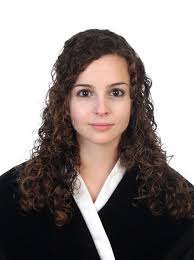
Alba Nicolas-Boluda was recipient of the best young presentation prize. Alba will conclude his PhD this year about physically triggered strategies to modulate tumor extracellular matrix in solid tumors to improve the efficacy of immunotherapies. Alba’s PhD is co-supervised by Emmanuel Donnadieu, an expert on cancer immune response senior CNRS researcher from Institut Cochin, and Florence Gazeau, a nanomedicine expert senior CNRS researcher at the BioTher team. SFNano proposes a focus on the BioTher team this month.
BioTher team
Location: The BioTher team is part of the MSC laboratory (Matière et Systèmes Complexes, UMR CNRS 7057), which is a joint laboratory from Université Paris Diderot and CNRS dedicated to physics of soft matter, turbulence, nanomaterials and living systems. BioTher team labs are situated both at Université Paris Diderot and Université Paris Descartes.
Team constitution: The BioTher team is headed by Drs. Florence Gazeau and Claire Wilhem, physicists. It gathers 3 additional permanent researchers (Amanda Silva Brun, pharmacist, Myriam Reffay, biophysicist and Nathalie Luciani, a biologist) and more than 12 non-permanent members (master students, PhD students, post-docs, engineers and technicians).
Expertise: The BioTher team is devoted to the study of soft matter physics at the interface of chemistry, biology, pharmacy and medicine. The team has expertise in cancer therapy using nanoparticle-mediated hyperthermia under optical or magnetic remote excitation. The team also has expertise in evaluating nanoparticle/cell interactions, toxicology and long term transformation/ biodegradation dissolution of nanoparticles in biological environments in order to investigate their fate in the body. Current research interests also focus on the physics of nanomagnetism applied to nanomedicine, cellular MRI, mechanobiology of cancer and magnetic targeting. The team is also developing alternatives to synthetic drug carriers and cell therapy by investigating innovative production and engineering methods for extracellular vesicles as a novel class of drug delivery system/ regenerative effector.
For more information: biother.net
Recent publications
- Extracellular vesicles for personalized medicine: The input of physically triggered production, loading and theranostic properties.Piffoux M, Nicolás-Boluda A, Mulens-Arias V, Richard S, Rahmi G, Gazeau F, Wilhelm C, Silva AKA. Adv Drug Deliv Rev doi: 10.1016/j.addr.2018 (2019).
- Recent insights in magnetic hyperthermia: From the « hot-spot » effect for local delivery to combined magneto-photo-thermia using magneto-plasmonic hybrids. Cazares-Cortes E, Cabana S, Boitard C, Nehlig E, Griffete N, Fresnais J, Wilhelm C, Abou-Hassan A, Ménager C. Adv Drug Deliv Rev. doi: 10.1016/j.addr.2018.10.016. (2019).
- Thermoresponsive Gel Embedding Adipose Stem Cell-Derived Extracellular Vesicles Promotes Esophageal Fistula Healing in a Thermo-Actuated Delivery Strategy. Silva AKA.; Perretta, S.; Perrod, G.; Pidial, L.; Lindner, V.; Carn, F.; Shony Lemieux; Alloyeau, D.; Boucenna, I.; Menasché, P.; Dallemagne, B.; Gazeau, F.; Wilhelm, C.; Cellier, C.; Clément, O.; Rahmi, G., ACS Nano. Oct 23;12(10):9800-9814 (2018).
- Theranostic Iron Oxide Nanoparticle Cargo Defines Extracellular Vesicle‐Dependent Modulation of Macrophage Activation and Migratory Behavior. Vladimir Mulens‐Arias, Alba Nicolás‐Boluda, Amanda Silva. Florence Gazeau. Advanced BioSystem 2, (9) 1800079 (2018).
- Physical oncology: New targets for nanomedicine. Nicolas-Boluda A., Silva AKA.., Fournel S., Gazeau F. Biomaterials. 2018, 150:87-99.
- Disturbance of adhesomes by gold nanoparticles reveals a size- and cell type-bias. Mulens-Arias V, Balfourier A , Nicolás-Boluda A , Carn F , Gazeau F . Biomater Sci. Dec 18;7(1):389-408 (2018).
- Nanohybrids with Magnetic and Persistent Luminescence Properties for Cell Labeling, Tracking, In Vivo Real-Time Imaging, and Magnetic Vectorization. Teston E, Maldiney T, Marangon I, Volatron J, Lalatonne Y, Motte L, Boisson-Vidal C, Autret G, Clément O, Scherman D, Gazeau F, Richard C. Small. 14(16):e1800020 (2018).
- Role of growth factors and oxygen to limit hypertrophy and impact of high magnetic nanoparticles dose during stem cell chondrogenesis. Van de Walle A, Faissal W, Wilhelm C, Luciani N. Comput Struct Biotechnol J. 30;16:532-542. (2018).
- Magnetic (hyper)thermia or photo-thermia? Progressive comparison of iron oxide and gold nanoparticles heating in water, in cells, and in vivo. Espinosa A, Kolosnjaj-Tabi J, Abou-Hassan A, Plan Sangnier A, Curcio A, Silva AKA, Di Corato R, Neveu S, Pellegrino T, Liz-Marzán LM, Wilhelm C. Advanced Functional Materials 1803660 (2018)
- Intracellular Biodegradation of Ag Nanoparticles, Storage in Ferritin, and Protection by Au Shell for Enhanced Photothermal Therapy. Espinosa A, Curcio A, Cabana S, Radtke G, Bugnet M, Kolosnjaj-Tabi J, Péchoux C, Alvarez-Lorenzo C, Botton GA, Silva A, Abou-Hassan A, Wilhelm C. ACS nano 12, 6523–6535 (2018)
- Targeted thermal therapy with genetically engineered magnetite magnetosomes@RGD: Photothermia is far more efficient than magnetic hyperthermia. Plan A, Preveral S, Curcio A, Silva A, Lefèvre CT, Pignol D, Lalatonne Y, Wilhelm C. Journal of Controlled Release 279, 271-281 (2018)
- Modification of Extracellular Vesicles by Fusion with Liposomes for the Design of Personalized Biogenic Drug Delivery Systems. Piffoux M, Silva AKA, Wilhelm C, Gazeau F, Tareste D. ACS nano 12, 6830-6842 (2018)
- Thermal Polymerization on the Surface of Iron Oxide Nanoparticles Mediated by Magnetic Hyperthermia: Implications for Multi-Shell Grafting and Environmental Applications. Griffete N, Fresnais J, Espinosa A, Taverna D, Wilhelm C, Ménager C. ACS Applied Nano Materials 1, 547-555 (2018)
- Monitoring the dynamics of cell-derived extracellular vesicles at the nanoscale by liquid-cell transmission electron microscopy. Piffoux M, Ahmad N, Nelayah J, Wilhelm C, Silva A, Gazeau F, Alloyeau D. Nanoscale 10, 1234-1244 (2018)



